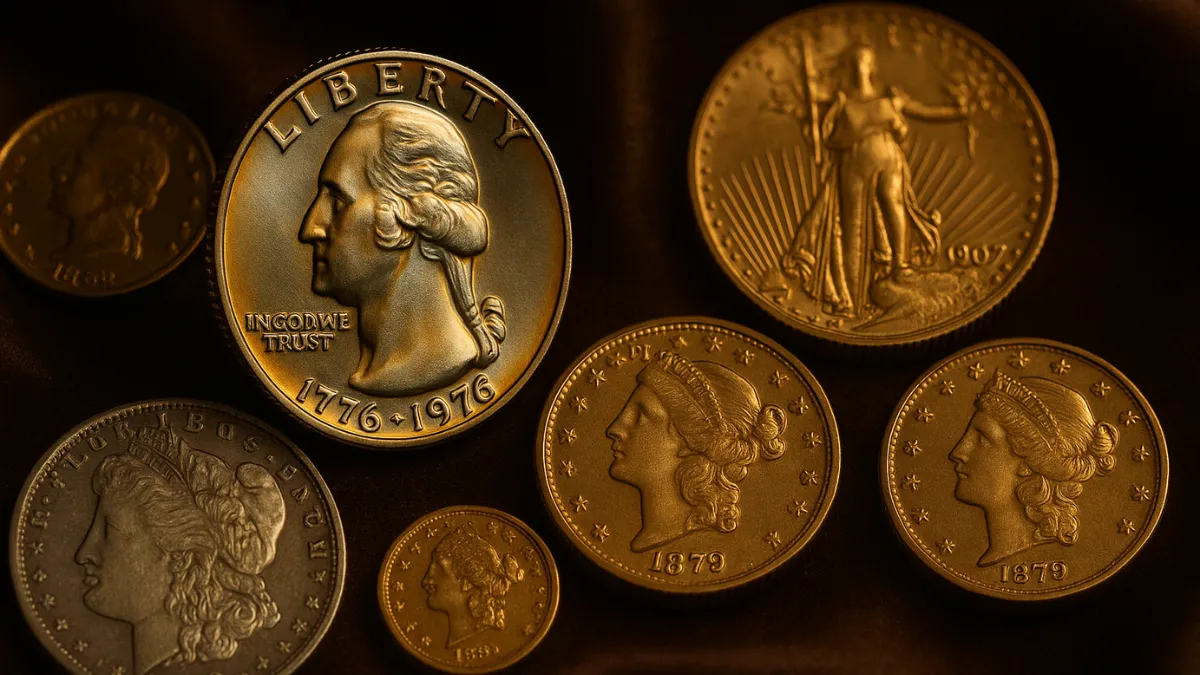Did you know that some rare Bicentennial quarters can fetch a price as high as $45 million? Coin collectors and enthusiasts are constantly on the lookout for hidden gems, and it’s possible that one of these rare quarters could be waiting in your pocket change! The Bicentennial Quarter, minted in 1976 to mark the U.S. bicentennial, has become a legendary piece in the world of coin collecting.
In this guide, we’ll show you how to identify these valuable coins, explain why they’re so sought after, and highlight other coins that can be worth over $20,000. Whether you’re a seasoned collector or a beginner, this article will help you navigate the exciting and profitable world of coin collecting.
What Makes the Bicentennial Quarter Special?
The Bicentennial Quarter was issued in 1976 as part of the United States’ celebration of its 200th anniversary. It features a unique design by Jack L. Ahr, depicting a drummer boy on the reverse side.
What makes these quarters even more interesting is their dual date, marking both 1776 and 1976, rather than the typical single-year stamp. While most of these quarters were minted for general circulation, certain versions have become highly valuable due to mint errors and rare features.
Why Are Some Bicentennial Quarters Worth So Much?
Although most Bicentennial quarters are only worth their face value, there are specific factors that can significantly increase their worth. In fact, certain errors, high-grade conditions, and rare variations can make them worth thousands, or even millions of dollars.
Factors That Make a Bicentennial Quarter Valuable:
- Minting Errors: Coins with double die errors, off-center strikes, or struck on the wrong planchet can be worth a lot.
- Silver Composition: Some quarters were made with 40% silver and were minted exclusively for collectors, which makes them more valuable.
- High-Grade Coins: Coins that are graded MS-67 or higher by reputable grading services like NGC or PCGS are considered rare and command premium prices.
- Rare Proof Versions: Special proof sets that were issued for collectors contain versions that are highly sought after.
- Low Population in High Grade: The fewer coins in uncirculated condition, the more valuable they are.
How to Spot a Rare Bicentennial Quarter
If you think you might have a valuable Bicentennial Quarter, here’s a quick checklist to help you identify its worth:
- Check the Mint Mark: Look just below Washington’s portrait. The mint mark indicates where the coin was produced: ‘D’ for Denver, ‘S’ for San Francisco, and no mint mark for Philadelphia.
- Test for Silver Composition: Regular quarters are made of copper-nickel clad, but special Bicentennial quarters contain 40% silver. You can test the coin by using a magnet—if it sticks, it’s not silver.
- Look for Minting Errors:
- Double Die Errors: This occurs when the letters and numbers appear doubled.
- Off-Center Strike: The design might be missing parts of the image.
- Wrong Planchet: The coin was struck on an incorrect metal blank, making it rare.
- Get Your Coin Graded: To find out its true value, submit your coin to a professional grading service like PCGS or NGC. Coins graded MS-67 or higher are more valuable.
Other Coins Worth Over $20,000
While the Bicentennial Quarter is certainly remarkable, it’s not the only coin that can fetch a small fortune. Here are some other rare and valuable coins to keep an eye out for:
- 1913 Liberty Head Nickel – Worth $3.7 Million
- 1933 Double Eagle – Worth $18.9 Million
- 1927-D Saint-Gaudens Double Eagle – Worth $1.5 Million
- 1794 Flowing Hair Silver Dollar – Worth $10 Million
These coins are highly sought after due to their rarity, historical significance, and condition, with some being almost impossible to find in mint condition.
How to Protect and Store Your Valuable Coins
If you’re fortunate enough to own a rare coin, it’s important to take proper care to preserve its value. Here are some expert tips on storing and handling your precious collection:
- Use Coin Holders: To protect your coins from oxidation and physical damage, store them in air-tight capsules or Mylar flips.
- Handle with Care: Always hold coins by the edges to avoid fingerprints and smudges.
- Store in a Controlled Environment: Keep coins in a low-humidity environment to prevent tarnishing and corrosion.
- Regular Inspections: Periodically check your coins for any signs of wear, discoloration, or damage.
- Don’t Clean Your Coins: Cleaning coins can decrease their value, so always avoid polishing or scrubbing them.
Where to Buy and Sell Rare Coins
If you’re looking to buy or sell rare coins, there are several trusted platforms available:
- Professional Coin Dealers: You can find certified numismatists through services like PCGS or NGC.
- Auction Houses: Heritage Auctions, Stack’s Bowers, and Sotheby’s are top venues for selling valuable coins.
- Online Marketplaces: Websites like eBay, Facebook Marketplace, and specialized coin-selling platforms also offer a convenient way to buy and sell coins.
FAQs
How do I know if my Bicentennial Quarter is rare?
Look for minting errors, check if it’s made of silver, and consider having it professionally graded to determine its value.
What is the most expensive U.S. coin ever sold?
The 1933 Double Eagle holds the record, selling for an astounding $18.9 million.
Are all Bicentennial Quarters valuable?
Most are worth face value, but those with minting errors, silver content, or high grades can be worth much more.
Where can I get my coin appraised?
You can have your coins professionally graded and appraised by services like NGC, PCGS, or through a certified coin dealer.
Coin collecting is an exciting journey, and some coins—like the rare Bicentennial Quarter—could change your life! By learning to identify key features, checking for errors, and properly storing your collection, you can uncover valuable pieces that have significant worth.



